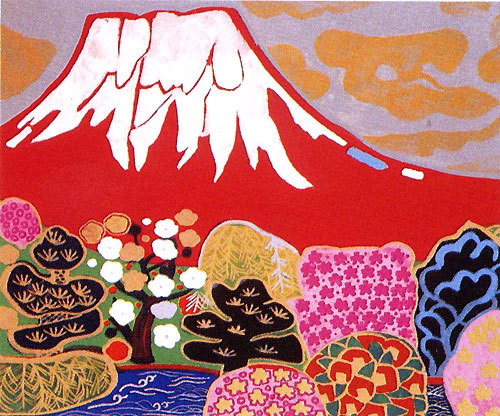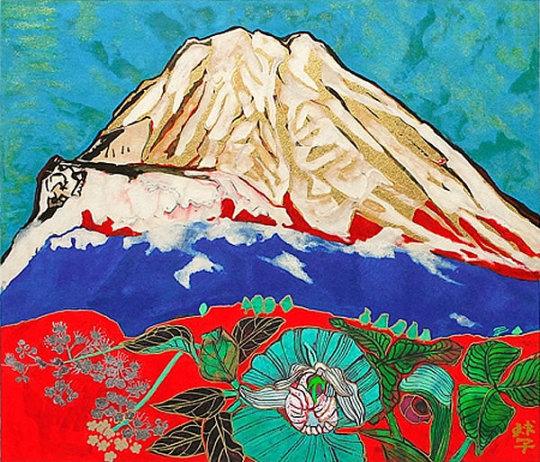#tamako kataoka
Explore tagged Tumblr posts
Text

Tamako Kataoka (片岡球子, Kataoka Tamako) (5 January 1905 in Sapporo – 16 January 2008) was a Japanese Nihonga painter. Bia
2 notes
·
View notes
Text
Weekend treat: go see kabuki for the first time in Ginza and go check the murals of Ukiyo-e artists by Tamako Kataoka underground!
9/6/2024
It was my very first experience in kabuki although I'm Japanese. Since there are plenty of opportunities to gain experience of a variety of cultures even without going abroad all the way nowadays, I have been eager to make out of what I have right now, such as seeing famous Japanese art which tourists from other countries aspire to see in person or visiting historic places in Japan. Therefore, watching kabuki was being on my bucket list for so long. Then, I heard some useful information for that as a novice; Kabuki Theatre sells discount tickets for the upper gallery/single act(within 25 minutes)seats. This is so affordable even for me to dare to without sufficient knowledge.

So, I watched the act starting at 1:30pm, Yoshitsune and the Thousand Cherry Trees, which seemed relatively easy to comprehend as its story is partially based on The Gikeiki, a well-known Japanese war-tale focusing on the legends of Minamoto no Yoshitsune and his followers. Nevertheless, I prepared for this play by looking over some websites dedicated to its plot and characters.

Firstly, I was a bit shocked at the fact that spectators in the upper gallery cannot access to most of the inside from the entrance to the luxurious lobby nor use an elevator. I was actually looking forward to looking around the inside of the new building to my heart's content, though; it's completely separate and exclusive(but one day I'll come back to see a whole play). Anyways, as for kabuki, we barely saw the main stage as well as the extra stage called "hanamichi", and I enjoyed its every single detail comparing to elements of Noh, which I studied in college, and simply felt the beat. Regrettably, due to a single act seat, I couldn't see the highlights and the end, yet I was satisfied with my first time in Kabuki Theatre at least.
After that, I stopped by a Tokyo metro station closed to the theatre, Tsukijishijo station, in order to see the murals by one of my favorite Japanese painters Tamako Kataoka(1905-2008) in person. She had great respect for Ukiyo-e or Japanese traditional performing arts, contributing the artwork below to the place where such Edo culture had been being developed. No one was even taking a glance at it there, whereas I alone took pictures of it in earnest(ridiculously); even if no one cares, I do care.

"Tsuragamae: Katsukawa Shunsho"(1987), "Tsuragamae: Toyokuni Utagawa"(1976)
#weekend treat#short trips#tokyo#japan#kabuki theatre#kabuki#ginza#tokyo metro#wall murals#ukiyoe#tamako kataoka#minamoto no yoshitsune#traditional arts#japanese art#edo period
4 notes
·
View notes
Text

Kataoka Tamako,
Auspicious Mt. Fuji
(2007)
0 notes
Text
Women in art - history series (very long ago)
Asia
China
Ancient Chinese society was patriarchal, and women were expected to conform to traditional gender roles and remain confined to domestic duties. However, some women challenged these norms and made significant contributions to the art world, leaving behind a legacy that inspires artists today. Despite the societal constraints placed upon them, these women bravely paved the way for future generations of female artists.
Some women were known to be poets, some of their written work has been documented. Ban Zhao was one of the early famous female writers, her most well-known work was Nuje or Instructions for Women, explaining the four virtues women were expected to follow speech, virtue, behavior, and work. Some women could be successful writers and painters or pursue other arts. Generally, these women were in wealthy families or married to men who were influential in society.
Japan
The art world has been greatly enriched by the contributions of these women, who overcame limitations to create remarkable works. Their art reflects the diverse and culturally rich heritage of ancient Japan, and their stories stand as a powerful testament to the resilience and creativity of women throughout history. Today, they continue to inspire artists and admirers alike.
Murasaki Shikibu
Murasaki Shikibu emerged as a prominent writer and poet whose contributions have impacted Japanese literature. Her masterpiece, "The Tale of Genji" , is widely regarded as one of the greatest works in Japanese literature. Notably, Murasaki Shikibu was highly respected by her contemporaries, who recognized her literary prowess and exceptional skills as a poet. Her legacy as a celebrated female artist endures to this day.

Tamako Kataoka
Tamako Kataoka, a renowned artist of the Edo period , was one of the most celebrated female painters of her time. Her artistic achievements were attributed to her exquisite brushwork and mastery of color, which she expertly employed to capture glimpses of nature and everyday life in her works. Despite the societal limitations imposed on women during that era, Kataoka established herself as a highly respected artist. Even today, her paintings continue to profoundly influence the world of Japanese painting.
Americas
In many Native American Tribes women played an essential role in developing art. Native American women participated in day-to-day tribal politics and governance development, which remained unchanged for centuries.
Africa
There are many talented and skilled female artists throughout the continent's history. However, work may not have been as widely recognized or celebrated as male counterparts. For example, women in many African cultures were responsible for creating pottery, textiles, and other everyday items that their families and communities used. While these objects were often beautifully crafted and decorated, they were not always viewed as "art" like, paintings or sculptures.
It is also worth noting that many of the written records and historical accounts from Africa were created by men and may, therefore, not accurately reflect the contributions and achievements of female artists.
Source: GUSTLIN, Deborah and GUSTLIN, Zoe, 2023. Herstory: Women Artists in History.
2 notes
·
View notes
Photo

Tamako Kataoka (1905-2008), Japanese Nihonga painter, best known for her series on Mount Fuji.
2K notes
·
View notes
Photo

Tamako Kataoka, Auspicious Mount Fuji, 1991,
Tokyo Art Club
462 notes
·
View notes
Photo

Tamako Kataoka “Bouquet for Mt.Fuji” ink and color on paper 60.6 x 72.8 cm. (23.9 x 28.7 in.)
26 notes
·
View notes
Photo


Kataoka Tamako 片岡球子 (1905 - 2008).
#kataoka tamako#tamako kataoka#female artist#painter#painting#japan#femme peintre#peinture#japon#fujiyama#fuji san
224 notes
·
View notes
Photo






Tamako Kataoka various paintings of Mount Fuji
0 notes
Photo

by Tamako Katayama
17 notes
·
View notes
Photo

TAMAKO KATAOKA Winter Has Come to Mt. Fugi
2004
lithograph, gold pigment, platinum leaf
35.5 x 45.5 cm
14 x 18 in.
6 notes
·
View notes
Text

Auspicious Mt. Fuji from Gotemba, by Tamako KATAOKA
7 notes
·
View notes
Photo



Tamako Kataoka (1905-2008), Japanese Nihonga painter, best known for her series on Mount Fuji.
12 notes
·
View notes

